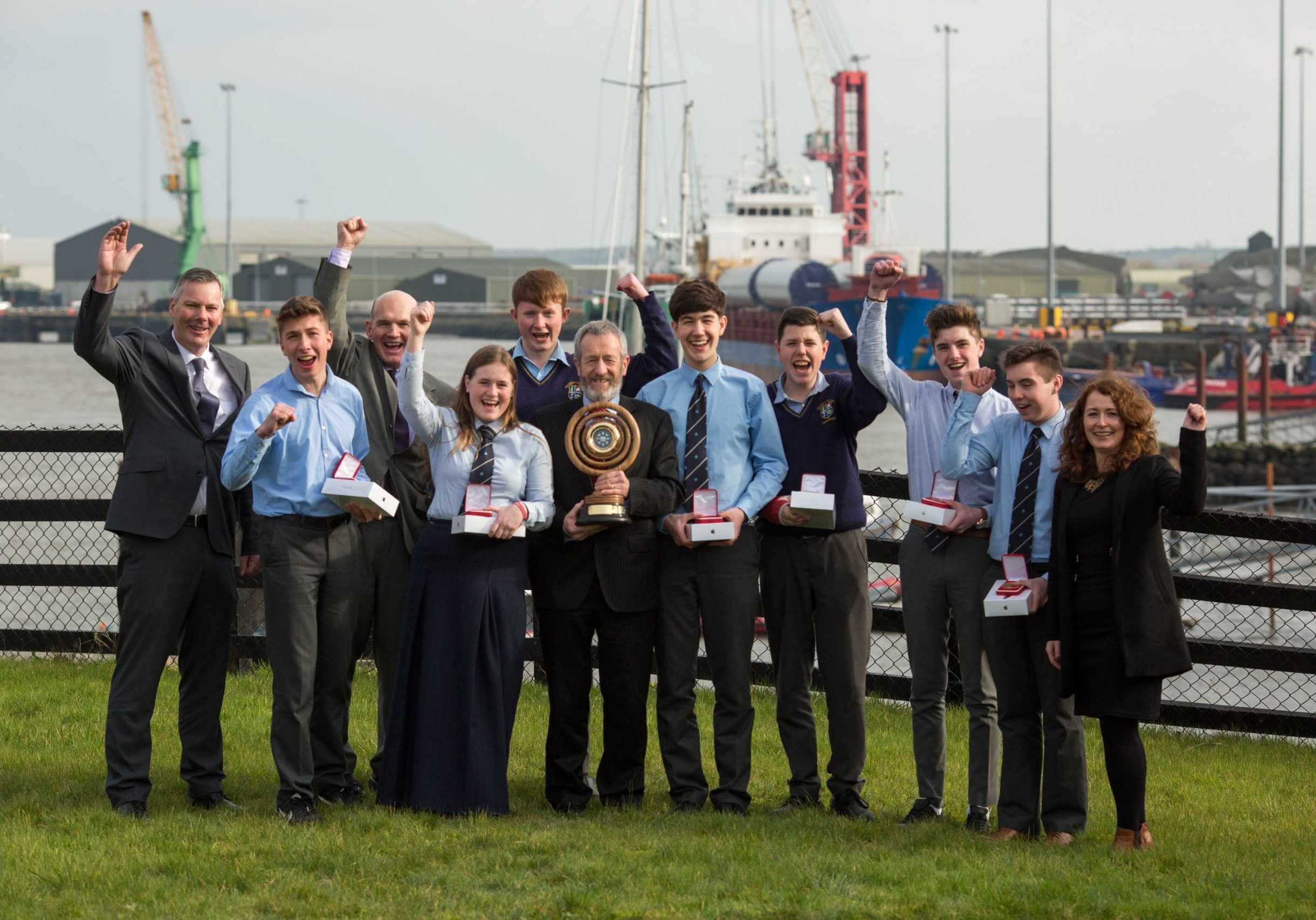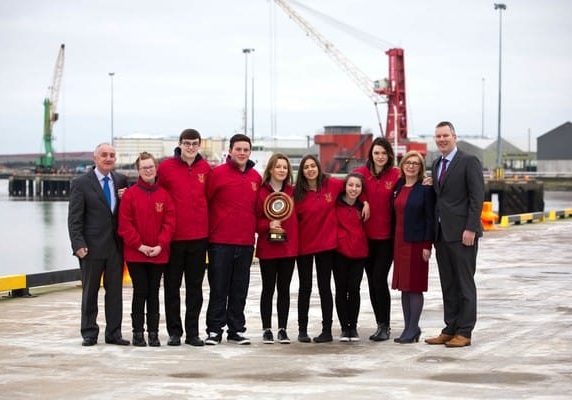Previous Winners

Shooting the Breeze - 2024
At the final of the 4th Compass Schools Competition, held at the Foynes Flying Boat and Maritime Museum, students from across the Shannon Estuary presented inspiring and innovative visions for a future powered by offshore wind energy. Organised by Shannon Foynes Port Company and themed ‘Shooting the Breeze’, the event challenged Transition Year students to imagine how floating wind technology off Ireland’s west coast could transform the region into a global renewable energy hub. St. Joseph’s Secondary School, Spanish Point, was named the winner, impressing judges with their creativity, teamwork, and understanding of the opportunity. With over 250 attendees, including government ministers and local leaders, the event highlighted the alignment between young people’s hopes for a sustainable future and the real potential of the Shannon Estuary to deliver it.

Transforming the Waves of the Shannon Estuary - 2022
At the third Shannon Foynes Port Company ‘Compass’ Transition Year competition, held at the Foynes Flying Boat & Maritime Museum, students once again demonstrated exceptional innovation with future-focused energy solutions. Laurel Hill Secondary School in Limerick claimed the top spot with their creative “Working Waves” concept, which proposed generating electricity from the movement of ships using pressure pads built into the hull. Themed “Transforming the Waves of the Shannon Estuary – Developing Alternative Energy Opportunities”, the event featured five finalists from Limerick and Kerry, each presenting unique renewable energy ideas to a packed audience of 300. The competition, praised for its highest-ever standard of entries, drew support from public figures including Minister of State Patrick O’Donovan and Limerick hurling manager John Kiely, who encouraged students to follow their ambitions. Organisers and judges hailed the event as a powerful platform for youth engagement in climate action and regional development through the Shannon Estuary’s renewable potential

Great Ships Need Deep Water - 2019
At the second Shannon Foynes Port Company (SFPC) Compass Transition Year Schools Competition, held at the Foynes Aviation & Maritime Museum, students from across Clare, Kerry, and Limerick showcased ambitious visions for the Shannon Estuary’s future as a global maritime and logistics hub. Salesian College, Pallaskenry, won top honours with their 3D proposal for a major transhipment centre at Ballylongford, featuring rail links to Foynes and the capacity to handle the world’s largest ships. Themed “Great Ships Need Deep Water”, the event drew over 300 attendees and featured six finalist schools presenting creative infrastructure and investment concepts. Judges and guests, including MEP Sean Kelly and GAA legend Davy Fitzgerald, praised the students’ confidence, innovation, and grasp of the estuary’s strategic importance. Organisers highlighted how the competition is helping to foster regional pride, awareness, and a forward-thinking mindset among young people about the estuary’s economic and environmental potential.

The Importance of Ports in the Mid-West Region - 2015
At the inaugural Shannon Foynes Port Company (SFPC) COMPASS Transition Year Schools Competition in 2015, St Patrick’s Comprehensive School, Shannon, took top honours with a creative educational project aimed at younger students. Their winning entry, a booklet filled with games and quizzes, was designed to help primary pupils better understand the Shannon Estuary and the vital role SFPC plays in the region’s economy. Themed “The Importance of Ports in the Mid-West”, the competition aimed to deepen awareness of port operations and their local impact. Education Minister Jan O’Sullivan and SFPC CEO Pat Keating praised the initiative for promoting engaged learning and highlighting the estuary’s economic significance. Students admitted they had little knowledge of the port beforehand, but came away with a new appreciation for its day-to-day influence in their lives, echoing the competition’s success in building local awareness and pride in regional infrastructure.

